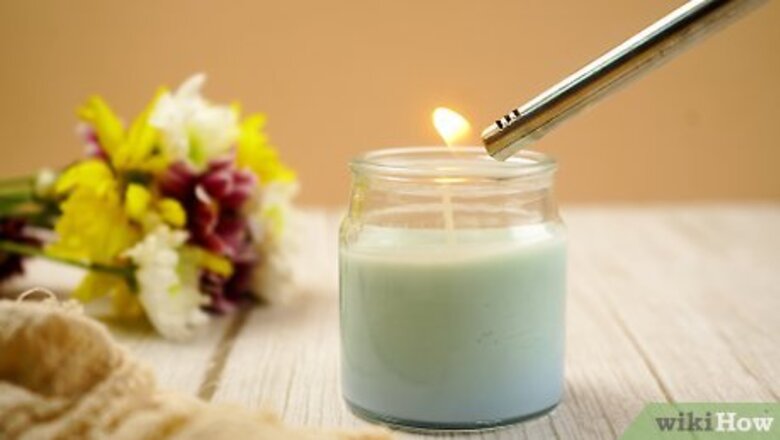
views
Lighting a Hard-to-Reach Wick

Use a fireplace match or bbq lighter for an easy reach. Fireplace matches are about 12 in (30 cm) long, and they make it simple to light nearly any jar candle. Similarly, a bbq lighter has a long, sometimes flexible nozzle at the end, so all you have to do is insert the tip near the wick, then press the trigger to light it. If you have a taper candle on hand, you could also light that, then reach the lit candle down into the jar.

Turn the candle upside-down to light it more easily. If you don't have a long lighter or match and your candle has burned down a little too much for you to light normally, try flipping it upside-down. Strike your lighter or match, then hold it directly under the candle wick. The flame should naturally reach up toward the wick, making it much easier to light. Flip the candle right-side-up as soon as the wick lights so you don't spill any wax as it melts. Doing this on its own may be enough to light the candle, but you can also try this with any of the following techniques for even more reach.
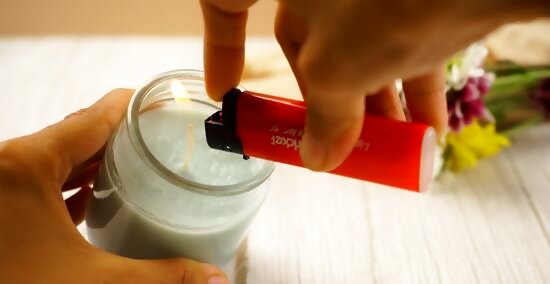
Use your index finger to get more reach with a normal lighter. Don't give up hope just because all you have is a regular lighter. Grab the lighter near the bottom with your thumb and middle finger. Reach your index finger up to strike the flint, then immediately press down the lever to keep the flame going. Since you'll be holding the lighter near the bottom, you'll be able to reach the lighter further down toward the wick. You also won't have to ball up your fist, so you may be able to slip your fingers further into the jar.
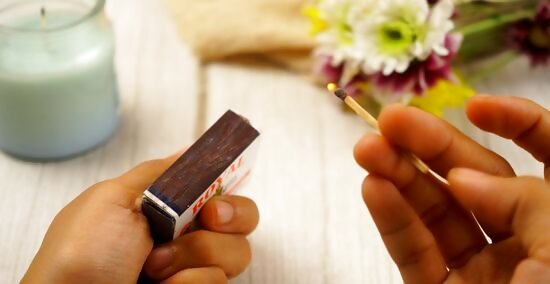
Hold a match with your middle and ring fingers to lengthen it. If all you have is a regular match, you may just need to change how you hold it to light your candle. Strike the match, then quickly tuck the very end of the match between your middle and ring fingers. Once you're sure it's secure, hold your hand flat and stretch your fingers into the mouth of the jar until the match reaches the candle wick. Turning the candle sideways can help make this easier. Be sure not to hold the match upside-down, as the flame could lick upward and burn you.

Twist a piece of paper tightly so it will burn slowly. If you're in a pinch and you need something that will reach way down into a tall candle, try using a piece of notebook or computer paper. Holding the paper longways, twist the ends in opposite directions until the paper is rolled as tightly as it will go. Then, hold one end of the paper and light the other. Quickly light your candle, then drop the paper in a bowl of water or hold it under a running sink to extinguish it. Don't shake the paper to put it out, as you could send hot embers flying. Work fast, as the paper will probably burn quickly. Also, be sure you're set up to put out the flame before you ever light the paper. The tighter you twist the paper, the more slowly it will burn.
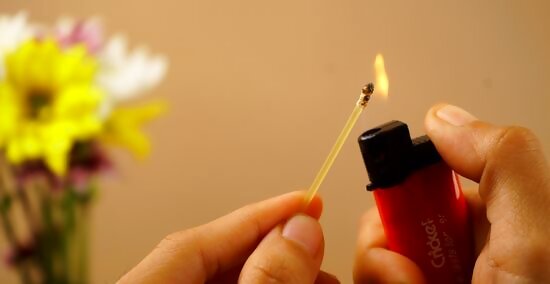
Try using uncooked spaghetti if you still can't reach the wick. The most surprising solution to your problem might just be in your pantry! Take a single piece of uncooked spaghetti and light one end. The spaghetti should burn similar to the way a match does. It won't stay lit for a very long time, but the flame should last long enough for you to reach down into the jar and light your candle. To put out the spaghetti, either shake the flame out or dip the end in a little water. Lighting the end of a wooden chopstick may work in a similar way.
Fixing a Short Wick

Scrape excess wax away from the wick with a spoon. Place the edge of the spoon or knife next to the wick, then push away. This will scrape off the excess wax without damaging the wick. This is easiest if the wax is slightly hardened but still soft. However, you can still try it if the wax has cooled completely—it might just take a little more elbow grease. If you'd like, you can save the excess wax to use in a wax warmer.

Heat the candle with a blow dryer to even out the surface. Set your blow dryer to low heat, then point the nozzle at the candle. Focus mainly on the areas where the wax is the highest, pouring off excess wax as it accumulates on the surface of the candle. Try not to leave the blow dryer pointing at any one place for too long. Otherwise, the glass jar could start to get hot, making it difficult to handle. Similarly, you could place the candle on a baking sheet, then put it into an oven heated to 175 °F (79 °C) for 5 minutes or so. Be sure to use oven mitts when you remove it from the oven!

Put the candle inside a vase to fix tunneling. Tunneling is the term for when a candle burns straight down, leaving unmelted wax around the outside edges of the jar. When that happens, it can cause melted wax to build up around the wick, eventually burying it. As soon as you notice tunneling happening, place the candle inside of a larger vase or hurricane glass. This will insulate the candle, helping the wax to heat more evenly around the outside of the jar. Leave the candle burning for about 2-3 hours, or until melted wax covers the entire top of the candle to about ⁄4 in (0.64 cm). However, check the candle periodically. You may need to carefully pour off any excess wax as it melts to avoid suffocating the flame. You can also wrap aluminum foil around the mouth of the candle. Just be sure to leave a hole in the top for air flow.
Burning the Candle Properly

Trim the wick every time to help the candle burn evenly. Before you light your candle, use scissors, nail clippers, or a wick trimmer to cut the wick down to about ⁄8–⁄4 in (0.32–0.64 cm). When the wick is too long, the candle will burn too fast, causing tunneling. It will also help prevent soot from building up on the wick, which could cause your candle to smoke. Trimming the wick will help prevent soot stains on the sides of your candle jar, as well. Wait for the candle to cool completely before you trim the wick.

Light the candle in a draft-free area so it burns slowly and evenly. If you put your candle under a vent or near an open window, the increased air flow will cause your candle to burn more quickly. The faster your candle burns, the more likely it will be to burn unevenly, so you may be at higher risk of tunneling. In addition, if wind is blowing the flame, you're more likely to get scorch marks on the jar.

Burn the candle for at least 1 hour at a time to prevent tunneling. A good rule of thumb is to let the candle burn for 1 hour for every 1 in (2.5 cm) of diameter—especially the very first time you burn it. If you don't let it burn long enough the first time, a tunnel will form, and it will be very difficult to get the candle to ever burn evenly again. Tunnels can form at any point during the candle's lifespan, so try to let it burn long enough every time you light it. If you want a candle you can light for short periods, choose a jar candle with multiple wicks. This will help it burn more easily. Taper candles may be a good option for you, as well. However, don't burn the candle for more than 4-6 hours. If the candle overheats, the glass could break or shatter, and it could turn into a fire hazard.

Put out the candle with the lid or a snuffer so it doesn't smoke. The best way to extinguish your candle is to suffocate it. If your candle has a lid, try covering it—when there's no oxygen left, the flame will go out. A snuffer works the same way, if you have one on hand. When you blow out a candle, it creates a lot of smoke, and the ash from the wick can spread through the wax. That can ruin a beautiful candle.

Center the wick after putting out the candle so it's ready for next time. When your candle is burning, the melted wax might allow the wick to shift a little to the side. That can cause your candle to burn unevenly, shortening its lifespan. To avoid that, gently push the wick back into the center of the candle while the wax is still soft. Be careful—let the wick cool a little after you extinguish it, and don't touch the wax, as it will be very hot.
















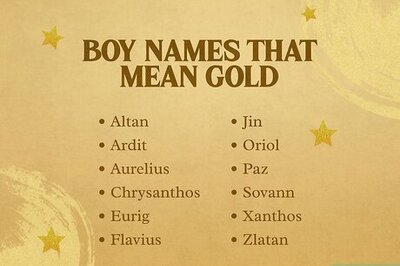
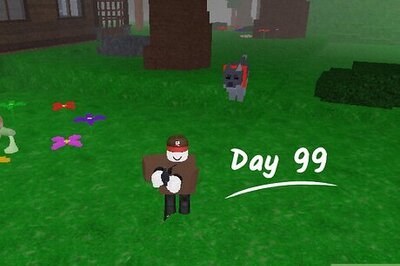

Comments
0 comment